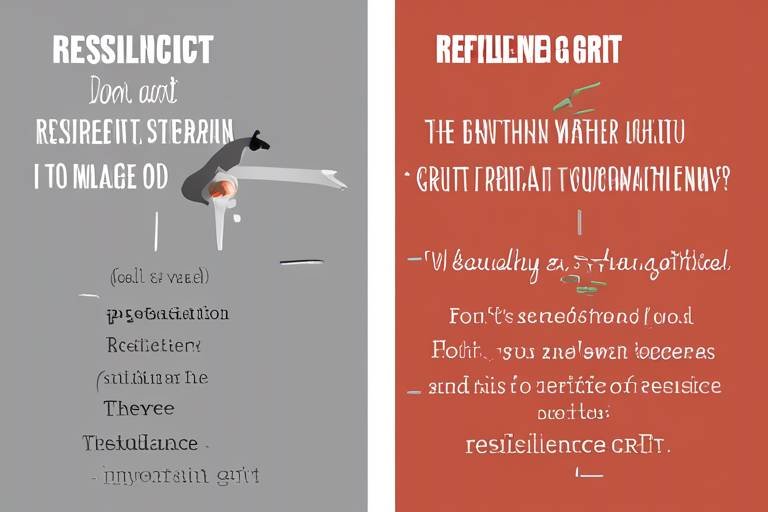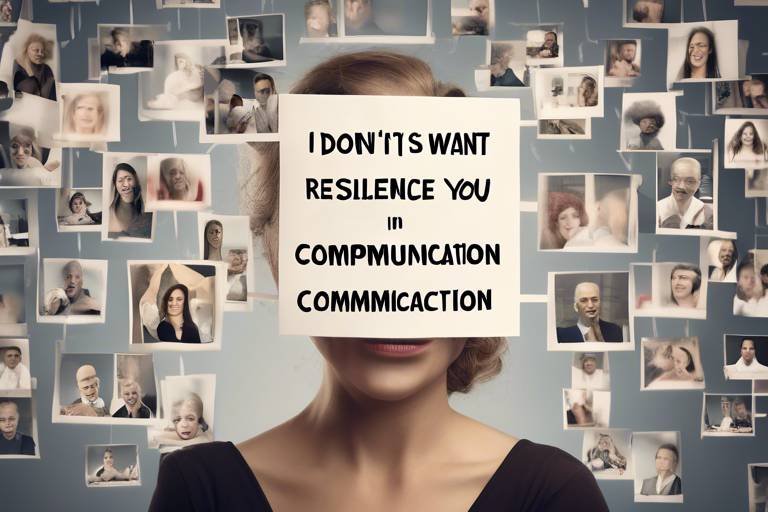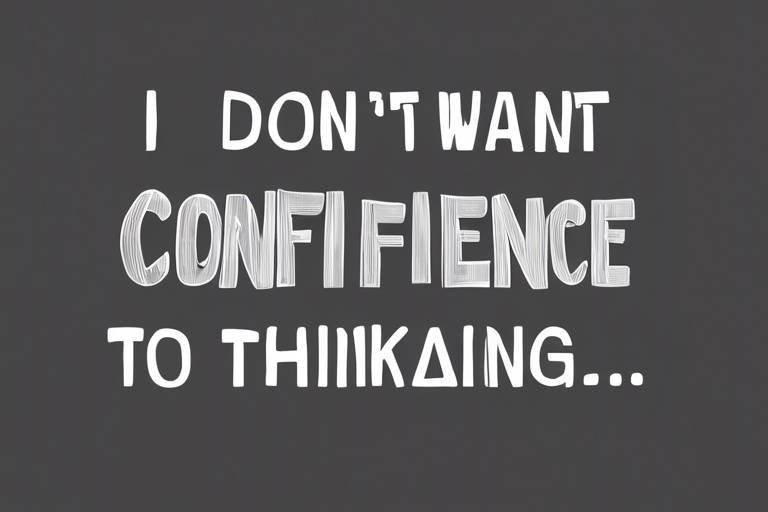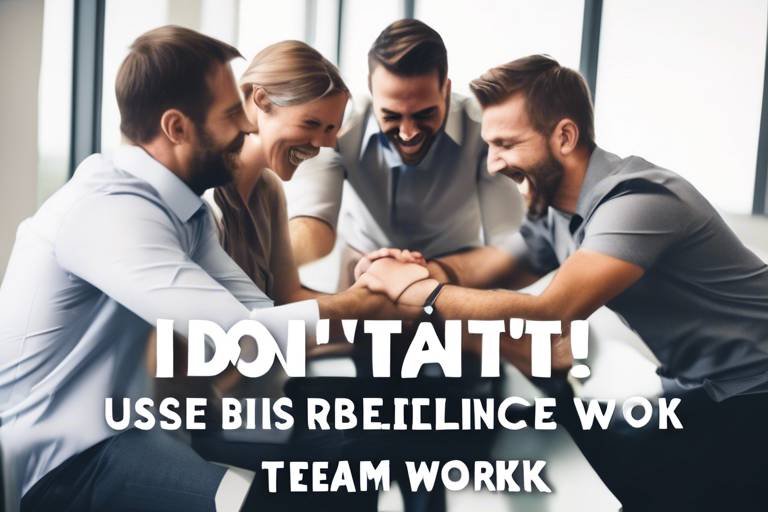Understanding the Difference Between Resilience and Grit
In today's fast-paced world, the concepts of resilience and grit have gained considerable attention, especially in personal development and professional success. But what exactly do these terms mean, and how do they influence our lives? While both traits are often discussed in tandem, they represent unique qualities that play distinct roles in our journey through challenges and achievements. Think of resilience as your emotional rubber band, allowing you to stretch and bounce back from life's inevitable setbacks, while grit is the fuel that keeps your engine running toward your long-term aspirations, even when the road gets bumpy. Understanding the nuances between these two traits can empower you to harness their strengths, leading to greater personal and professional growth.
Resilience refers to the ability to bounce back from adversity, trauma, or stress. It encompasses emotional strength and adaptability, allowing individuals to face challenges and recover from setbacks effectively. Imagine resilience as a sturdy tree that bends during a storm but remains rooted, ready to stand tall once the winds subside. This trait enables people to not only survive difficult situations but also to learn and grow from them. Resilient individuals often exhibit a positive mindset, viewing failures as opportunities for growth. They understand that life is a series of ups and downs, and they are equipped with the tools to navigate through the rough patches.
Grit is characterized by perseverance and passion for long-term goals. It involves maintaining effort and motivation over time, even in the face of obstacles, making it crucial for achieving success. Picture grit as a marathon runner who, despite fatigue and pain, keeps putting one foot in front of the other, driven by the vision of crossing the finish line. Those with grit are not easily deterred by challenges; instead, they embrace them as part of the journey. This unwavering commitment to their goals helps them push through difficulties that might cause others to give up.
Resilience contributes significantly to personal development by enabling individuals to learn from failures, adapt to change, and cultivate a positive mindset during difficult times. It acts as a protective shield against the stressors of life, allowing individuals to recover from setbacks more quickly. When faced with challenges, resilient people often ask themselves, "What can I learn from this?" rather than succumbing to despair. This proactive approach fosters a growth mindset, where challenges are seen as stepping stones rather than roadblocks.
Emotional intelligence plays a vital role in resilience, helping individuals manage their emotions, empathize with others, and navigate social complexities, ultimately enhancing their ability to cope with challenges. By being aware of their feelings and those of others, resilient individuals can create supportive networks that bolster their strength. They understand that asking for help is not a sign of weakness but rather a step toward recovery. This emotional awareness also allows them to respond to stressors with a level head, making more informed decisions during tough times.
Effective strategies such as mindfulness, social support, and positive reframing can significantly boost resilience, equipping individuals with tools to handle stress and adversity more effectively. Here are a few strategies:
- Mindfulness: Practicing mindfulness can help individuals stay grounded and focused, reducing anxiety and enhancing emotional regulation.
- Social Support: Building a strong support system allows individuals to share their burdens and gain perspective from others.
- Positive Reframing: This involves viewing challenges through a more optimistic lens, helping to shift focus from problems to potential solutions.
Grit is essential for achieving long-term objectives, as it fosters sustained effort and determination. Individuals with grit are more likely to overcome obstacles and maintain focus on their aspirations. They understand that success is not a sprint but a marathon, requiring endurance and a steadfast commitment to their goals. This unwavering resolve often leads to higher levels of achievement, as gritty individuals are willing to put in the hard work necessary to reach their dreams.
While resilience and grit share similarities, they differ in focus. Resilience emphasizes recovery from setbacks, whereas grit highlights sustained effort towards long-term goals, showcasing distinct yet complementary strengths. Think of resilience as the ability to recover from a fall, while grit is the determination to keep climbing despite the challenges. Both traits are essential in navigating the complexities of life, and together, they create a powerful combination that can lead to personal and professional success.
The relationship between resilience and grit is synergistic. Resilience can enhance grit by providing the emotional strength needed to persist, while grit can foster resilience through consistent effort and determination. When faced with a daunting task, a resilient person is more likely to maintain their grit, knowing they have the inner strength to bounce back from any setbacks. Conversely, a gritty individual is better equipped to develop resilience as they learn to navigate challenges with unwavering determination.
Cultivating both resilience and grit involves intentional practice, self-reflection, and embracing challenges. Individuals can improve these traits through goal setting, seeking feedback, and maintaining a growth mindset. Start by setting small, achievable goals that require effort and perseverance. Celebrate your successes, no matter how small, and learn from your failures. Embrace challenges as opportunities for growth, and don't hesitate to seek support from others. Remember, developing resilience and grit is a journey, not a destination.
- What is the main difference between resilience and grit? Resilience focuses on bouncing back from setbacks, while grit emphasizes sustained effort toward long-term goals.
- Can you develop resilience and grit? Yes, both traits can be cultivated through intentional practice, self-reflection, and embracing challenges.
- How can emotional intelligence enhance resilience? Emotional intelligence helps individuals manage their emotions and empathize with others, which can strengthen their ability to cope with challenges.

Defining Resilience
Resilience is an incredible quality that enables individuals to bounce back from adversity, trauma, or stress. Imagine a rubber band: when you stretch it and then let it go, it returns to its original shape. This metaphor perfectly illustrates resilience. It’s not just about enduring hardships; it’s about adapting and growing stronger through them. When faced with life's challenges, resilient individuals demonstrate emotional strength and a remarkable ability to adapt, allowing them to navigate through tough times with grace and determination.
One of the most fascinating aspects of resilience is its multi-dimensional nature. It encompasses various components, including emotional regulation, optimism, and social support. These elements work together to help individuals effectively manage stress and recover from setbacks. For instance, a resilient person may experience a setback at work, such as receiving critical feedback on a project. Instead of succumbing to despair, they reflect on the feedback, learn from it, and use it as a stepping stone for future success. This capacity to learn and grow from experiences is a hallmark of resilience.
Moreover, resilience is not a fixed trait; it can be developed and strengthened over time. Just like building muscle at the gym, enhancing resilience requires practice and intentional effort. Here are some key characteristics that often define resilient individuals:
- Adaptability: They can adjust their thoughts and behaviors in response to changing circumstances.
- Optimism: They maintain a hopeful outlook, believing that challenges can be overcome.
- Emotional Awareness: They understand and manage their emotions, allowing for better decision-making.
- Social Connections: They cultivate strong relationships that provide support during tough times.
In summary, resilience is about more than just surviving difficult situations; it's about thriving in the face of adversity. By cultivating resilience, individuals can enhance their ability to cope with life's inevitable challenges, turning potential setbacks into opportunities for growth and development.

Defining Grit
Grit is a term that has gained significant traction in recent years, particularly in discussions surrounding personal development and success. But what exactly does it mean? At its core, grit is the combination of passion and perseverance for long-term goals. It's that unwavering commitment to push through challenges, even when the going gets tough. Imagine climbing a mountain; grit is what keeps you moving forward, step by step, even when your legs ache and the summit seems far away.
The concept of grit goes beyond mere determination. It's about having the stamina to stay focused on your goals over extended periods, despite facing obstacles or setbacks. This characteristic is crucial because success rarely happens overnight. Instead, it often requires consistent effort and a willingness to learn from failures along the way. Individuals with grit view challenges as opportunities for growth rather than insurmountable barriers. They understand that the path to achievement is often winding and filled with bumps, but their passion for their objectives fuels their journey.
Research by psychologist Angela Duckworth has brought grit into the spotlight, highlighting its importance in various fields, from education to professional environments. She defines grit as a trait that can be developed over time, much like a muscle that strengthens with regular exercise. This means that anyone can cultivate grit by setting long-term goals and remaining committed to them, even when faced with adversity.
To better understand grit, we can break it down into two main components:
- Passion: This refers to the intense enthusiasm and love for what you do. Passion drives individuals to pursue their interests relentlessly.
- Perseverance: This is the ability to maintain effort and motivation, even when faced with challenges, failures, or periods of stagnation.
Together, these elements form the backbone of grit. It's not just about having a goal; it's about being able to stick with it through thick and thin. Think of grit as the fuel that powers your engine—without it, your journey toward success can stall. So, whether you're an aspiring artist, entrepreneur, or athlete, embracing grit can make all the difference in achieving your dreams.

The Role of Resilience in Personal Growth
Resilience plays a pivotal role in personal growth, acting as a powerful catalyst that propels individuals forward, especially in the face of adversity. Imagine life as a series of waves; resilience is the surfboard that keeps you afloat, allowing you to ride out the rough waters instead of being pulled under. It’s not just about bouncing back; it’s about learning, adapting, and evolving through challenges. Without resilience, setbacks can feel insurmountable, leading to stagnation and despair.
One of the most remarkable aspects of resilience is its ability to foster a growth mindset. When faced with difficulties, resilient individuals tend to view challenges as opportunities for learning rather than as insurmountable obstacles. This shift in perspective is crucial for personal development. For instance, when someone encounters failure, instead of succumbing to negativity, they analyze what went wrong, extract valuable lessons, and apply those insights moving forward. This process not only enhances their problem-solving skills but also builds confidence, making them more equipped to face future challenges.
Moreover, resilience contributes significantly to emotional intelligence. This is the ability to recognize, understand, and manage our emotions as well as the emotions of others. Resilient individuals often exhibit higher levels of emotional intelligence, which allows them to navigate social complexities with ease. They can empathize with others, offering support during tough times, while also managing their emotional responses effectively. This dual capability enhances their relationships, creating a supportive network that is invaluable during challenging periods.
To illustrate the importance of resilience in personal growth, consider the following table highlighting key characteristics:
| Characteristic | Description |
|---|---|
| Adaptability | The ability to adjust to new conditions and challenges. |
| Emotional Regulation | Managing emotions effectively, particularly in stressful situations. |
| Positive Outlook | Maintaining an optimistic perspective, even in adversity. |
| Support Seeking | Recognizing when to ask for help and utilizing social support. |
Implementing effective strategies can significantly enhance resilience. Techniques such as mindfulness, which involves being present and fully engaged in the moment, can help individuals manage stress and reduce anxiety. Additionally, cultivating a strong support network—friends, family, or mentors—can provide the emotional backing needed during tough times. Positive reframing, or the practice of viewing situations through a more positive lens, can also transform setbacks into valuable learning experiences.
In summary, resilience is not just a trait; it’s a vital skill that can be developed and strengthened over time. By embracing challenges, learning from failures, and fostering emotional intelligence, individuals can pave their way to personal growth and success. So, the next time you encounter a hurdle, remember that it’s not about avoiding the fall; it’s about how you rise that truly defines your journey.
- What is resilience? Resilience is the ability to recover from difficulties and adapt to challenges effectively.
- How can I develop resilience? You can develop resilience through mindfulness, building emotional intelligence, and seeking social support.
- Why is resilience important for personal growth? Resilience enables individuals to learn from failures and maintain a positive mindset, which is crucial for personal development.
- What is the difference between resilience and grit? Resilience focuses on recovery from setbacks, while grit emphasizes sustained effort towards long-term goals.

Building Emotional Intelligence
Building emotional intelligence is like constructing a sturdy bridge that connects your feelings to your actions. It’s not just about understanding your emotions; it’s about recognizing how they influence your decisions and interactions with others. Imagine navigating a stormy sea without a compass; that’s what life can feel like without emotional intelligence. You may find yourself tossed around by waves of frustration, anger, or sadness, making it hard to reach your destination.
To cultivate emotional intelligence, one must first develop self-awareness. This means taking the time to reflect on your emotions and understanding their roots. Ask yourself questions like, “Why do I feel this way?” or “What triggered this reaction?” By identifying your emotional triggers, you can start to manage your responses more effectively. It’s akin to knowing the weather patterns before setting sail; it prepares you for what lies ahead.
Next, self-regulation comes into play. This is where you learn to control your emotions rather than letting them control you. It’s about pausing before reacting, allowing yourself to breathe and think. For instance, instead of snapping at a colleague during a stressful moment, you take a step back, assess the situation, and respond thoughtfully. This practice not only helps you maintain composure but also fosters a healthier work environment.
Another critical component is empathy. This involves putting yourself in others' shoes and understanding their feelings and perspectives. When you cultivate empathy, you enhance your relationships, both personally and professionally. You start to see the world through a different lens, which can lead to deeper connections and more effective communication. It’s like tuning into a different radio station; once you adjust the dial, the music becomes clearer, and you can appreciate the nuances.
To further enhance your emotional intelligence, consider these strategies:
- Practice Active Listening: Focus on truly hearing what others are saying, rather than just waiting for your turn to speak.
- Seek Feedback: Ask trusted friends or colleagues how they perceive your emotional responses and interactions.
- Engage in Mindfulness: Regular mindfulness practices can help you become more aware of your emotions in real-time.
Building emotional intelligence is a journey that requires intentional practice and self-reflection. By investing time in understanding and managing your emotions, you empower yourself to face challenges with confidence and resilience. This not only enriches your personal life but also enhances your professional relationships, paving the way for success.
Q: How can I improve my emotional intelligence?
A: You can improve your emotional intelligence by practicing self-awareness, self-regulation, empathy, and active listening. Regularly reflecting on your emotions and seeking feedback from others can also be beneficial.
Q: Is emotional intelligence more important than IQ?
A: While IQ measures cognitive abilities, emotional intelligence is crucial for personal and professional success. Many studies suggest that emotional intelligence can be a better predictor of success in life than IQ alone.
Q: Can emotional intelligence be learned?
A: Yes, emotional intelligence can be developed through practice and self-reflection. Engaging in activities that promote self-awareness and empathy can significantly enhance your emotional intelligence over time.

Strategies for Enhancing Resilience
This article explores the concepts of resilience and grit, highlighting their definitions, characteristics, and the unique roles they play in personal and professional growth.
Resilience refers to the ability to bounce back from adversity, trauma, or stress. It encompasses emotional strength and adaptability, allowing individuals to face challenges and recover from setbacks effectively.
Grit is characterized by perseverance and passion for long-term goals. It involves maintaining effort and motivation over time, even in the face of obstacles, making it crucial for achieving success.
Resilience contributes significantly to personal development by enabling individuals to learn from failures, adapt to change, and cultivate a positive mindset during difficult times.
Emotional intelligence plays a vital role in resilience, helping individuals manage their emotions, empathize with others, and navigate social complexities, ultimately enhancing their ability to cope with challenges.
Enhancing resilience is akin to building muscle; it requires consistent effort and the right techniques. One effective strategy is mindfulness. By practicing mindfulness, individuals can develop a heightened awareness of their thoughts and feelings, allowing them to respond to stressors with clarity and calmness rather than reacting impulsively. This practice not only helps in managing stress but also fosters a greater understanding of oneself, which is crucial during challenging times.
Another powerful strategy is to cultivate a strong support network. Surrounding oneself with supportive friends, family, or mentors can provide emotional backing and practical advice when navigating difficult situations. It’s important to remember that reaching out for help is not a sign of weakness; rather, it’s a testament to one’s strength and willingness to grow. Engaging in open conversations about challenges can also alleviate feelings of isolation.
Additionally, positive reframing is a technique that can significantly boost resilience. This involves viewing setbacks as opportunities for growth rather than insurmountable obstacles. For instance, instead of seeing a job loss as a disaster, one might reframe it as a chance to explore new career paths or pursue a long-held passion. This shift in perspective can transform challenges into stepping stones for future success.
Lastly, setting achievable goals can help in enhancing resilience. By breaking larger objectives into smaller, manageable tasks, individuals can experience a series of small wins. This not only builds confidence but also reinforces the belief that they can overcome obstacles. It's like climbing a mountain; each small step brings you closer to the summit, and the journey becomes more manageable and less daunting.
Grit is essential for achieving long-term objectives, as it fosters sustained effort and determination. Individuals with grit are more likely to overcome obstacles and maintain focus on their aspirations.
While resilience and grit share similarities, they differ in focus. Resilience emphasizes recovery from setbacks, whereas grit highlights sustained effort towards long-term goals, showcasing distinct yet complementary strengths.
The relationship between resilience and grit is synergistic. Resilience can enhance grit by providing the emotional strength needed to persist, while grit can foster resilience through consistent effort and determination.
Cultivating both resilience and grit involves intentional practice, self-reflection, and embracing challenges. Individuals can improve these traits through goal setting, seeking feedback, and maintaining a growth mindset.
- What is the main difference between resilience and grit? Resilience focuses on bouncing back from challenges, while grit emphasizes sustained effort towards long-term goals.
- Can you develop resilience and grit? Yes, both traits can be cultivated through intentional practices such as mindfulness, building support networks, and setting achievable goals.
- Why is emotional intelligence important for resilience? Emotional intelligence helps individuals manage their emotions and empathize with others, which enhances their ability to cope with challenges effectively.

The Role of Grit in Achieving Goals
When we talk about grit, we're diving into the essence of what it means to chase a dream relentlessly. Imagine a marathon runner who, despite the blisters and exhaustion, keeps putting one foot in front of the other. That’s grit in action! It’s that unwavering determination and passion that keeps individuals focused on their long-term goals, regardless of the hurdles they face along the way.
Grit is not just about hard work; it’s about maintaining that work ethic over a prolonged period. Think of it as the fuel that powers your journey toward success. While talent and intelligence can open doors, it’s often the gritty individuals who walk through them and make the most of the opportunities presented. They understand that the path to achievement is rarely a straight line; it’s filled with twists and turns, ups and downs.
One of the most fascinating aspects of grit is its ability to foster resilience. When faced with challenges, gritty individuals don’t just bounce back; they bounce forward, using their experiences as stepping stones to greater achievements. They learn from their failures, adapt their strategies, and keep pushing forward. This is what sets them apart from those who might give up at the first sign of trouble.
To illustrate this, let’s consider a few key characteristics that define gritty individuals:
- Passion: They are deeply invested in their long-term goals, which fuels their motivation.
- Perseverance: They don’t shy away from hard work and understand that success often requires sustained effort.
- Focus: They maintain their attention on their goals, even when distractions arise.
In a world where instant gratification is the norm, grit is more important than ever. It encourages individuals to cultivate a mindset that values persistence and hard work over quick wins. This is especially crucial in professional settings, where long-term projects often require sustained effort and commitment. Companies today are increasingly recognizing the value of grit, looking for employees who not only have the skills but also the tenacity to see projects through to completion.
Moreover, grit can be developed and strengthened over time. It’s not just an innate trait; it’s a skill that can be honed through practice and experience. Here are a few strategies that can help individuals cultivate grit:
- Set Clear Goals: Knowing what you want to achieve and breaking it down into manageable steps can enhance focus and drive.
- Embrace Challenges: View obstacles as opportunities for growth rather than setbacks.
- Seek Feedback: Constructive criticism can provide insights that help refine your approach and keep you motivated.
In conclusion, grit is a vital ingredient in the recipe for success. It empowers individuals to persist through challenges, maintain their focus on long-term objectives, and ultimately achieve their goals. So, the next time you find yourself facing a daunting task or an uphill battle, remember: it’s not just about how smart you are or how talented you are; it’s about how gritty you can be!
Q: Can grit be developed?
A: Absolutely! Grit can be cultivated through practice, setting clear goals, and embracing challenges.
Q: How does grit differ from resilience?
A: While resilience is about bouncing back from setbacks, grit focuses on sustained effort toward long-term goals.
Q: Why is grit important in the workplace?
A: Grit helps employees persevere through challenges and stay committed to their projects, leading to greater success and productivity.

Comparing Resilience and Grit
When we dive into the world of personal development, two terms often come up: resilience and grit. While they might sound similar at first glance, they represent different, yet interrelated, aspects of our ability to navigate life's challenges. Think of resilience as your emotional rubber band; it stretches and bends but ultimately returns to its original shape after being pulled. On the other hand, grit is like a marathon runner who keeps pushing forward, mile after mile, undeterred by fatigue or obstacles. In essence, resilience is about bouncing back, while grit is about pushing through.
To clarify further, let’s break down their core attributes. Resilience focuses on how well we can recover from setbacks. It’s about adapting to change, learning from failures, and maintaining a positive outlook even when the going gets tough. It’s that inner strength that helps us cope with stress and adversity. On the flip side, grit emphasizes the long-term commitment to our goals. It’s about having the passion and perseverance to stay the course, even when faced with significant hurdles. In many ways, grit is the fuel that keeps the engine running while resilience is the oil that keeps everything smooth.
Here’s a quick comparison in a table format to highlight their differences:
| Aspect | Resilience | Grit |
|---|---|---|
| Definition | The ability to recover from setbacks | Passion and perseverance for long-term goals |
| Focus | Emotional recovery | Sustained effort |
| Timeframe | Short-term recovery | Long-term commitment |
| Outcome | Adaptation and growth | Achievement of goals |
Despite their differences, resilience and grit are not mutually exclusive. In fact, they often work hand in hand. For instance, a person with a high level of resilience may find it easier to cultivate grit because they can bounce back from failures without losing sight of their long-term goals. Conversely, someone with grit may develop resilience over time as they learn to navigate the ups and downs of pursuing their passions. This interplay creates a dynamic relationship where each trait enhances the other.
So, why should we care about understanding the difference between these two qualities? Well, recognizing the unique roles they play can help us develop a more holistic approach to personal and professional growth. By fostering both resilience and grit, we can equip ourselves with a robust toolkit to tackle life's challenges head-on, ensuring that we not only survive but thrive in our endeavors.
- Can someone be resilient without being gritty? Yes, it's possible. A person can bounce back from setbacks but may lack the long-term commitment to pursue their goals.
- Is grit more important than resilience? It depends on the context. Both are crucial, but their importance may vary based on individual circumstances and goals.
- How can I develop both resilience and grit? Engage in self-reflection, set achievable goals, and embrace challenges to cultivate both traits.

Interplay Between Resilience and Grit
The relationship between resilience and grit is not just a simple connection; it’s a dynamic interplay that can significantly impact personal and professional growth. Imagine resilience as the sturdy roots of a tree, anchoring it during storms, while grit serves as the tree's ability to grow tall and strong despite facing harsh weather. Together, they create a robust system that enables individuals to thrive even when the going gets tough.
Resilience acts as a buffer against life’s inevitable challenges, providing the emotional and psychological strength needed to bounce back from setbacks. When faced with adversity, resilient individuals are more likely to maintain their composure and find constructive ways to cope. This emotional fortitude can enhance one's grit, as it allows individuals to stay focused on their long-term goals despite encountering obstacles. Without resilience, the journey toward achieving goals can feel overwhelming, leading to discouragement and, ultimately, giving up.
On the flip side, grit can also foster resilience. When individuals persistently pursue their goals, they inevitably face challenges that test their limits. Each time they overcome an obstacle, they build a reservoir of experience and confidence. This accumulation of victories, no matter how small, fortifies their resilience, making them better equipped to handle future setbacks. It's a cycle of growth where each trait amplifies the other, creating a powerful synergy.
To illustrate this interplay further, consider the following key points:
- Resilience enhances grit: When individuals develop emotional strength, they are more likely to stay committed to their long-term goals, even when faced with difficulties.
- Grit fosters resilience: The consistent effort and determination that come with grit help individuals learn from failures, making them more adaptable to future challenges.
- Mutual reinforcement: The more resilient a person becomes, the more they are likely to persevere, and the more they persevere, the stronger their resilience grows.
In essence, cultivating both resilience and grit is crucial for anyone looking to navigate life's ups and downs effectively. By recognizing how these traits interact, individuals can develop strategies that leverage their strengths, leading to a more fulfilling and successful life. So, the next time you face a challenge, remember that your resilience and grit are not just individual traits; they are partners in your journey toward success.
- What is the main difference between resilience and grit? Resilience focuses on the ability to recover from setbacks, while grit emphasizes sustained effort toward long-term goals.
- Can you develop resilience and grit? Yes, both traits can be cultivated through intentional practice, self-reflection, and embracing challenges.
- How do resilience and grit contribute to success? Together, they provide the emotional strength and perseverance needed to overcome obstacles and achieve goals.

Developing Both Traits
Developing both resilience and grit is like nurturing a garden; it requires patience, attention, and the right conditions to flourish. Just as plants need sunlight and water, individuals need intentional practice and self-reflection to cultivate these essential traits. The journey begins with understanding that both resilience and grit are not innate qualities but skills that can be developed over time.
One effective approach to enhancing resilience is to embrace challenges as opportunities for growth. When faced with obstacles, instead of shying away, ask yourself, “What can I learn from this?” This mindset shift is crucial. It allows you to see failures not as dead ends but as stepping stones to success. Similarly, grit thrives on the commitment to long-term goals, so setting clear, achievable objectives can help maintain focus and motivation.
Another key aspect is the importance of feedback. Just like a gardener prunes plants to encourage better growth, seeking feedback from others can help you identify areas for improvement and reinforce your strengths. This feedback loop not only builds resilience by providing support during tough times, but it also fuels grit by keeping you aligned with your goals.
Moreover, maintaining a growth mindset is vital for developing both traits. This concept, popularized by psychologist Carol Dweck, emphasizes the belief that abilities can be developed through dedication and hard work. When you adopt a growth mindset, you become more open to challenges, view effort as a path to mastery, and understand that setbacks are part of the learning process. This perspective is essential for both resilience and grit.
To summarize, cultivating resilience and grit involves:
- Embracing challenges as learning opportunities
- Setting clear and achievable long-term goals
- Seeking constructive feedback
- Maintaining a growth mindset
By integrating these strategies into your daily life, you can create a robust foundation that supports both resilience and grit. Remember, the journey is ongoing, and each step you take contributes to your personal growth and success.
Q: Can resilience and grit be developed at any age?
A: Absolutely! Both traits can be cultivated at any stage of life. It's never too late to start building your resilience and grit.
Q: Are resilience and grit the same thing?
A: No, they are distinct but complementary. Resilience focuses on bouncing back from setbacks, while grit emphasizes sustained effort towards long-term goals.
Q: What are some practical exercises to build resilience?
A: Practicing mindfulness, maintaining a supportive social network, and reflecting on past challenges can enhance resilience.
Q: How can I measure my grit?
A: While there isn’t a one-size-fits-all measurement, self-reflection on your commitment to long-term goals and how you handle setbacks can provide insights into your level of grit.
Frequently Asked Questions
- What is the main difference between resilience and grit?
Resilience is all about bouncing back from setbacks and adapting to challenges, while grit focuses on the perseverance and passion needed to achieve long-term goals. Think of resilience as your emotional strength in tough times, and grit as the fuel that keeps you going towards your dreams.
- Can resilience be developed over time?
Absolutely! Resilience is not just a trait you either have or don’t have. It can be cultivated through practices like mindfulness, building social connections, and maintaining a positive outlook. Just like building muscle, the more you work on your resilience, the stronger it becomes!
- Why is emotional intelligence important for resilience?
Emotional intelligence helps you manage your emotions and understand others better, which is crucial when facing challenges. It equips you to navigate through tough situations, empathize with others, and bounce back more effectively. It’s like having a toolkit for your feelings!
- How does grit contribute to success?
Grit is essential for success because it drives you to keep pushing forward, even when the going gets tough. It’s that inner determination that helps you stay focused on your goals, no matter the obstacles. Think of it as the stamina you need for a marathon, not just a sprint!
- Can someone be resilient but lack grit?
Yes, it’s possible! You might be great at bouncing back from difficulties but struggle to maintain long-term focus on your goals. Resilience and grit complement each other, but they can exist independently. It’s like being able to recover from a fall but not having the drive to keep running.
- What strategies can help enhance both resilience and grit?
Intentional practice and self-reflection are key! Setting achievable goals, seeking feedback, and adopting a growth mindset can help you develop both traits. Embracing challenges and viewing failures as learning opportunities also contribute significantly to building resilience and grit.



















